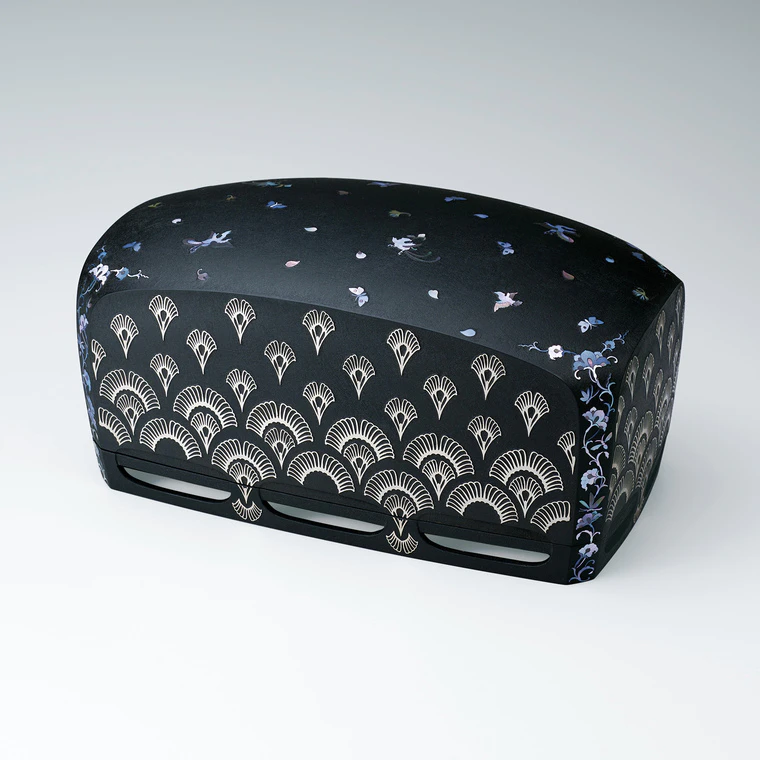Kanshitsu box for Ryūchiku sutra with design in mother-of-pearl inlay and hyōmon.
H 15.0 x W 32.0 x D 16.0 cm,Year.2023Hitomi Shintani
1987 -- Lacquerware
-
Price Range
Under ¥3,000,000
Info
The prices of the artworks on Gallery Japan are determined by the artists themselves and are published directly on the website.
close - Awards at Japan Kōgei Assoc. Exhibitions : 8
Description
-
CategoryLacquerware
-
MaterialsHemp cloth, Black-lipped pearl oyster, Gold powder
-
DimensionsH 15.0 x W 32.0 x D 16.0 cm
-
Year presented2023
-
RarityUnique
Techniques Used
Dry lacquer
For works of dry lacquer (kanshitsu), first a clay form is created and plaster is used to take a mold of the form. Next, repeated layers of hemp cloth and lacquer are applied to the mold until they are built up to the desired thickness. Finally, the mold is removed and additional coats of lacquer are applied to finish the piece. The hemp fibers are strengthened when the lacquer bonds with them, making dry lacquer an excellent technique for creating sturdy forms with a significant degree of freedom.
Metal sheet inlay
Metal sheet inlay (hyōmon) is a technique that involves cutting shapes out of thin sheets of gold, silver, or other metals to create an inlay motif.
Mother-of-pearl inlay (Raden)
Mother-of-pearl inlay (Raden) is a decorative technique that uses the iridescent inner layer of abalone shell, turban shell, pearl oyster shell, or other mollusk shells. The technique came to Japan from China 1,300 years ago, and pieces featuring mother-of-pearl inlay are included among the artifacts at the Shōsōin Repository in Nara.
Selected exhibitions
- The 70th Japan Traditional Kōgei Exhibition (2023)
- Selected

